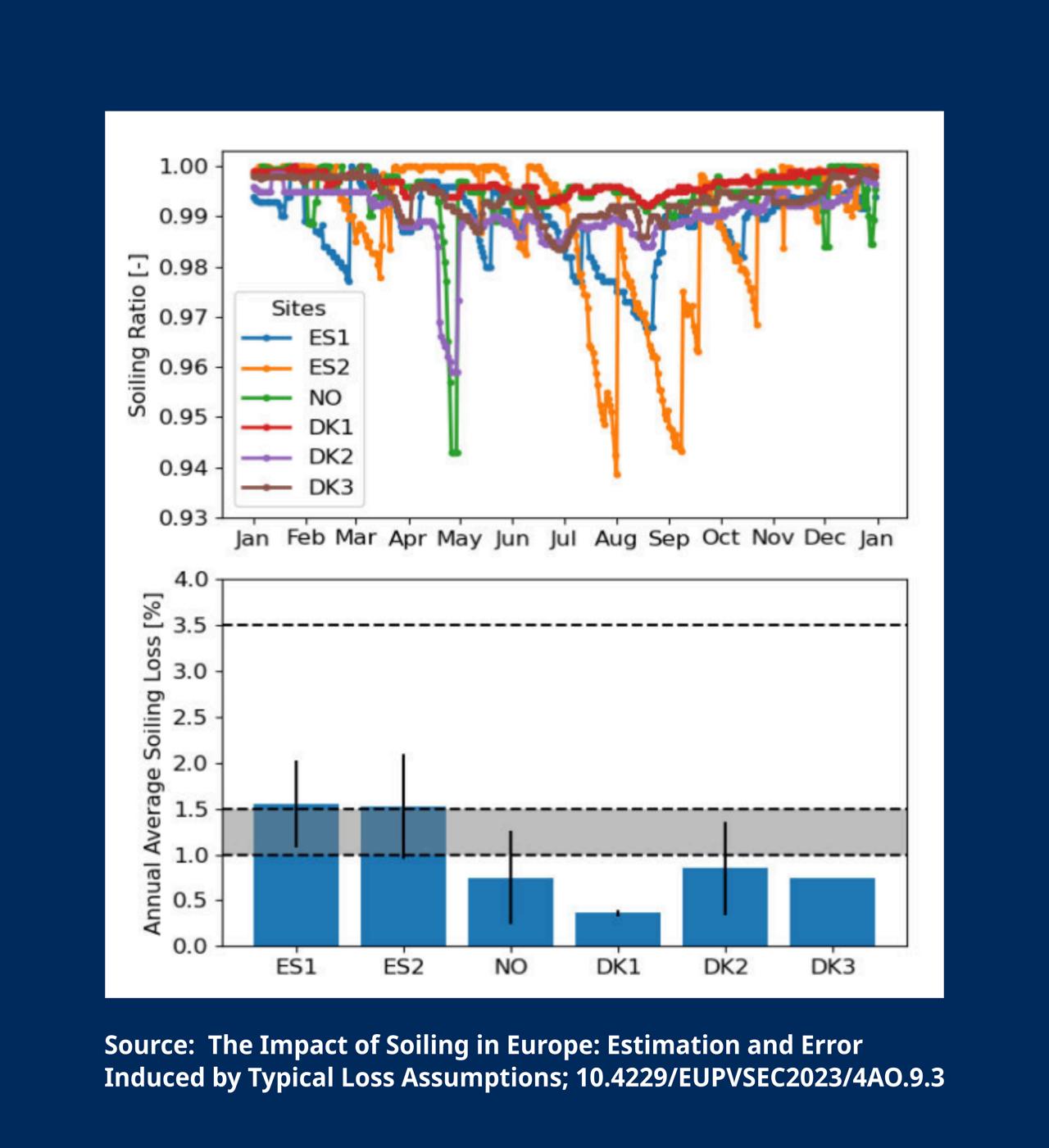Cleaning or not cleaning a photovoltaic installation, that is the question 🤔
The accumulation of particles such as dust, pollen, or bird droppings on photovoltaic modules can cause significant losses in the energy generation of photovoltaic installations.
The losses due to dirt are difficult to quantify, as evidenced by the fact that there is no widely used physical model for it. The impact of these losses is highly dependent on the project's location, and there are many variables at play in the process of particle accumulation and dissemination.
The most common approach to estimating these losses for simulation is to assume a fixed value between 0.4 % for modules in areas with rainfall of more than 800 mm/year and regular cleanings, and 2.5 % for systems located in areas with less than 200 mm/year.
In the graph, you can see the results of an empirical study by Advances in Photovoltaic Technology (AdPVTech), Sapienza Università di Roma, DTU - Technical University of Denmark, and European Energy presented this year at EU PVSEC, showing the actual energy and income losses associated with particle accumulation for 6 locations distributed between Spain, Norway, and Denmark. The following can be observed:
➡️ Markedly seasonal dirt patterns: pollination, dry periods, and agricultural activities.
➡️ Losses of up to 6 % in summer in Spain due to lack of rain.
➡️ The average annual energy loss in Denmark and Norway does not exceed 1 %, while in Spain, it has an average of 1.5 % for the studied locations.
➡️ Income losses are heavily influenced by energy prices, multiplying by 2 or even 3 between 2021 and 2022.
So, is it necessary to do periodic cleanings? and how often? There is no one-size-fits-all answer, but there are certain recommendations:
☀️ It is recommended to clean the installation during dry periods.
🦅 Bird droppings are not always cleaned by rainwater, so they should be cleaned manually and promptly to avoid damaging the affected module.
💶 Consider the price of energy when determining if cleaning is cost-effective.
🧼 The most common in maintenance contracts is an annual cleaning.
As you can see, selecting the appropriate strategy for each photovoltaic installation can make a significant difference in the savings generated for your customer.

Sources
- https://userarea.eupvsec.org/proceedings/EU-PVSEC-2023/4AO.9.3/
- https://iea-pvps.org/wp-content/uploads/2020/01/Report_IEA-PVPS_T13-08_2017_Technical_Assumptions_Used_in_PV_Financial_Models.pdf
- https://iea-pvps.org/wp-content/uploads/2020/01/Uncertainties_in_PV_System_Yield_Predictions_and_Assessments_by_Task_13.pdf